Salta and Jujuy
My father and I ventured off to the north-western provinces of
We flew into the city of
Like many Latin American colonial cities,
Salta’s well conserved customs (staunch Catholicism and daily siestas), its postcard colonial architecture, combined with its feudal political and economic structures, sets the city centuries apart from bustling Buenos Aires.
One of the city’s most remarkable structures is the
The northwest is known as one of the poorest regions in the country, however upon first glance one is oblivious to this reality.
The slums are carefully tucked away, the homeless are swept off the streets, and the infrastructure is surprisingly modern.
Locals are happy to express their support of the current provincial governor, Juan Carlos Romero. Presiding over his third term, Romero has achieved nationwide infamy for being an oligarch, repressing labour and indigenous movements, and having run as Carlos Menem’s Vicepresident during his failed 2003 election comeback attempt.
What is certain, is that the city is growing rapidly. Construction sites abound and tourism explodes. Population grew by 25% between 1991 and 2001. A guide told us that tourism has overtaken agriculture as the most important sector of the economy (I couldn’t find any evidence confirming this).
Our Movitrack excursion, called Nubes con Humahuaca, started off on the well known, but currently out-of-service path called el tren a las nubes (a very popular tourist train which travels through the
From
I immediately asked the driver for some coca leaves; the regional breathing aid. The controversial substance is used by people in the Andean region to suppress hunger and fatigue, among other cultural and religious purposes. While trying to fight my dizziness, I began chewing on a wad of 15 leaves.
Soon enough the light-headedness became bearable. However, my hunger for exotic meats (such as llama beef), traditional empanadas, and stew remained as strong as ever. Given the success of the coca, I continued chewing for the rest of the trip and made sure to purchase coca tea to take back to
Our tour guide, who had a constant coca bulge in one of his cheeks, told us about the government hypocrisy regarding coca criminalization. It was illegal to produce, import and sell coca plant/leaves. Yet it was perfectly legal to have your personal amount and chew it wherever you wished. It seemed that just about every male in the region was chewing (sorry equal opportunists, it is considered unladylike for women to chew).
He told us that there is no scientific evidence demonstrating harmful effects of coca leaf chewing. I didn’t fully believe him, but when I started researching the issue, I couldn’t find any evidence arguing otherwise. I did, however, find further evidence of the ‘hypocrisy’ he was arguing against.
Evo Morales,
The irony of Coca-Cola being a popular drink in an impoverished indigenous town, such as

At the next stop I surprisingly awoke to the sight of what appeared to be a never-ending snow plain. I felt like I had been transported back to a frozen lake in the dead of Canadian winter. White as far as the eyes could see, with a backdrop of the Andean mountain range.
We were now in the middle of the
Given the sheer size of the basin, it would appear that is an important source of income for the province. However, given the feudal relationship between land owners and peasants, the worker showed in this picture makes around $3 pesos (or US$1.00!) per day to work in the unhealthiest of conditions:
When I gave this man 2 pesos for allowing me to take his picture, I had no idea that I had just given him 2/3 of his daily salary, and therefore I couldn’t appreciate why he remained in his pose for a good five minutes after I had taken the picture.
We continued eastward, descending until we reached the Quebrada de Humahuaca valley, at around 2000m above sea level. Declared by UNESCO as a World Heritage site, the valley is not only visually stunning, but of critical importance as a trade route dating back to 10,000 years ago.
Our first stop in the valley was the picturesque town of Pumamarca, set against the backdrop of a mountain called “seven colours” (the picture doesn’t do the real thing justice as the purples, greens, blues, oranges, and reds don’t really come through):
We then visited the Pucará ruins in an ancient fortress city which was used to watch over and protect the valley:
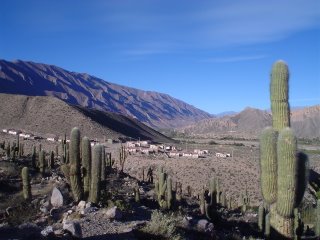
The northernmost point of the journey was the town of Humahuaca. Very calm, almost frozen in time (if it weren’t for the tourism). We strolled for an hour or so to observe people go about their daily errands: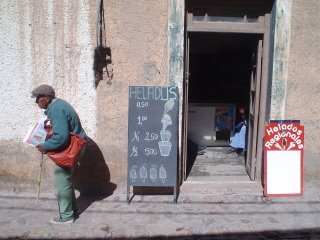
On our way back to Jujuy we drove past the town of Maimará and the mountain behind it known as the “painter’s palette”:
When was time to return to our original destination, we took the long-winded scenic route. The dry, semi-desert landscapes rapidly transformed into humid, jungle-like slopes, known as the yunga:
For the first time in two days I was finally able to fill my lungs with the oxygen they had been deprived of. Soon enough I was back in the polluted streets of Buenos Aires, contemplating if my next adventure would take me to the even denser jungles of Misiones and the majestic Iguazu falls.
Actually, I was really thinking about how Argentina would fare against the largely unknown Ivory Coast squad.
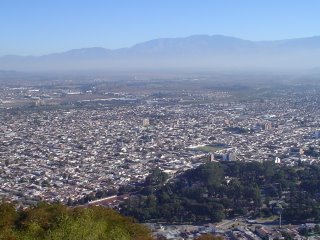




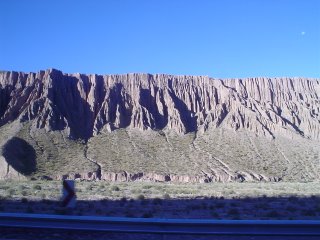
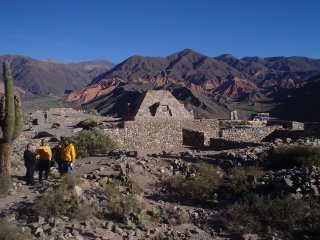

3 Comments:
Nice post, D'filmus. I look forward to my arrival. I could have gotten placed in Salta, but look forward to Posadas. I'm suggesting that my group visit your blog.
Hey, I've read through you website and you seem to have gotten into a world of my dream jobs in my dream location. If you've got a moment, I'd like to talk with you by mail or phone if possible. Take care.
Great posting, Diego. I loved this article and the pics are really beautiful. Thanks
Post a Comment
<< Home